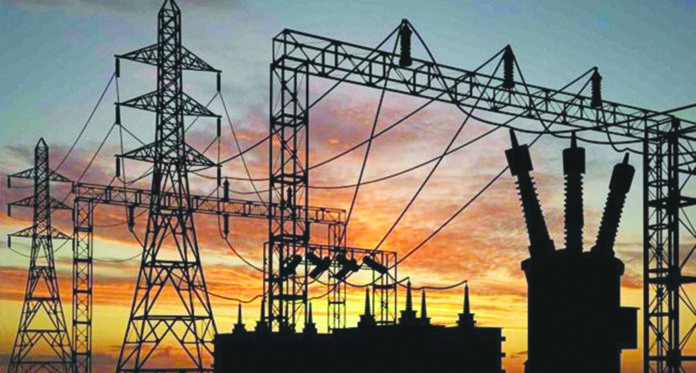Reasons for power outages
The energy crisis is not only destroying the economy but also disrupting the political system. The mechanism of power distribution in Pakistan is obsolete and inefficient hence power losses occur to adequately meet the consumer demand. Power outages are not because of less supply of energy in Pakistan, they are because of fluctuations on transmission lines which have not been updated from time to time, and hence the basic issue is of the difference between generation capacity and capacity to transmit it to the distribution companies. In 2020, 20 percent energy was lost during transmission. Once WAPDA used to provide 65 percent of the energy of the country but now it is reduced to a mere 35 percent.
It is also said that Sui gas reserves are also depleting fast and will soon be exhausted. At the most they may last three more years. And then we will be forced to import natural gas. Many experts are of the view that the decision to use natural gas as CNG in cars in Pakistan proved to have more drawbacks than benefits if seen in the backdrop of long term impacts on gas supply.
Financial crisis created by circular debt
The circular debt of the country’s energy sector reached Rs 5.422 trillion and capacity payments to IPPs jumped to Rs 2 trillion. (by Febeuuary)
In many cities of Pakistan there are frequent power outages. “The power outages in Pakistan are because of the circular debt issue. When the government cannot pay in time to the power distribution companies (DISCOs), because of circular debt, these in turn cannot pay the power generators (GENCOs). These power generators then struggle to pay their fuel suppliers who have no money to import oil. Thus these cash flow problems lead to delayed payments which affect the whole power sector despite the fact that we have sufficient generation capacity”.
Domestic energy production in Pakistan heavily relies on import of fossil fuels. Setting up coal-fired plants on imported coal when coal was available locally was strange indeed. Due to insufficient storage sites floods wreak havocs. A scientist said “Had there been Bhasha dam, all flood water would have been stored in 2022”.
What is required?
To overcome the energy problems of Pakistan, growth of the economy and its up-scaling is required. A strategy to get rid of the dependence on fossil fuels is needed owing to their contribution to carbon emissions. Although Pakistan has not as much a contribution to global emissions in the world as other developed countries have, yet we must be watchful that these effluents do not exceed the acceptable levels. The need of the hour is providing cheap electricity to the population.
Electricity shortfall climbed to 6,623 MW during May, 2024.
There is a rampant volatile commodity price, double digit inflation, dwindling foreign exchange reserves, dangerously high national debt. Economic instability and exorbitant cost of living are worsened by the ongoing challenge in energy production and distribution which are adversely impacting economic development. Pakistan has supply mismanagement issues. Overall planning by our regulatory bodies in Pakistan needs to be improved. Focus should be on areas like energy management, infrastructure and economic planning. Our industry must be made competitive.
India last time went to the IMF in 1991, but never afterwards. It must be remembered that the IMF’s policies are narrowly based and it wants to secure their loans. Pakistan has participated in 24 IMF programmes since signing its first agreement in 1958 to help overcome an economic crisis.
Pakistan has also sought financial assistance from China, Saudi Arabia and the UAE.
Excessive dependence on non-renewable energy sources must be avoided. Resilient energy infrastructure is required. We should go for utilizing untapped renewable energy sources like solar, hydro, wind, tidal, nuclear, bio fuels and geothermal. Upgrading grids and overhauling transmission processes are also required. Sustainable energy policies are needed. Building small and medium sized dams would help overcome water scarcity to a great extent.
The misgovernance in the oil and gas industry in licensing processes, permit applications and the subcontracting of parts of a company’s operations lead to chaos whereby inflated energy prices and industry closure become the apparent manifestations. Lack of technical expertise is also responsible. Inefficiency and myopic policy commitment with IPPs is another reason. Per capita energy consumption is directly related to economic development of any country. According to NEPRA Pakistan’s annual electricity consumption was 644 kilowatt hour in 2022 which was among the lowest in the world.
Conventional Energy Resources
Energy demand is increasing at the rate of 2 percent annually in the world while renewable energy resources are double this amount. Conventional energy resources are depleting with the passage of time. Moreover, they emit harmful emissions like carbon dioxide, methane, sulphur dioxide, nitrogen oxide and nitrous oxide. There is a direct correlation between economic development and carbon emissions. “The global surface concentration of carbon dioxide averaged across all 12 months of 2023 was 419.3 ppm (parts per million)” and it should be noted that as many as five years are taken to reduce 1 part per million. Due to increased carbon emissions and climate change extreme weather patterns are visible. Karachi experienced seven waves of monsoon rains in Karachi in 2022. This also lays emphasis on the need for a recourse to cleaner sources of energy.
The renewable energy resources are environment friendly and are viable to meet the future energy demand. In Pakistan there are abundant natural resources. There are numerous hydel sites in North West KPK and on the coastline of Sindh there are vast resources of wind energy.
How environmental connection is important
We should follow a path that corroborates the natural path and pay special attention to the measures that ensure our survival in future. If we go against nature, it will simply recoil on us. At some point the population will reach where the earth will not be able to support it.
Pakistan is grappling with a severe water crisis.
According to UNICEF, approximately 53,000 children under the age of five die each year in Pakistan from diarrhea caused by poor water and sanitation and an estimated 70 percent of households still drink bacterially contaminated water. (Report published in 2021)
The government’s priority should be to arrange drinkable water for the people as without food a person can survive up to three weeks but without water he cannot survive more than 3 days.
Energy economics should be incorporated in the energy policy. For this we need people who are well versed and have the related knowledge. Students should be imparted trainings in the colleges and universities so as to enable them to include this component in the energy policy and work accordingly. Most importantly the culture of being the son of the soil should be engendered in the youth. Our youth should get rid of fixation of leaving the country for good. It should be in their minds that they may leave temporarily for enhancing capacity but on coming back they must utilize their expertise for the uplift of their country. This commitment is lacking on the part of our youth.
Incentivizing renewable energy and Energy efficiency ensures development of economics and trade. We need to socially contextualize energy problems. Individual contribution, for instance using energy-efficient devices, LEDs and propagating similar behavioural changes including using public transports, reducing the use of private cars, walking more, and cycling, can help foster an energy-saving culture.
Other measures include cutting carbon emissions to limit temperature increases and maintain it at 1.5 degree Celsius.
The government should be more proactive in a shift to renewable sources of energy. Pakistan needs a sustainable economic growth for a reasonable period of time. Since long we have been dealing with the issue of balance of payments. This issue is aggravated with high import bills. If we are importing solar panels then again the same balance of payments will occur.
The prime challenge for Pakistan is economic growth. We should aim at an economic growth rate of 6 to 7 percent which can be achieved through a stable monetary policy, a balanced capital account, and preservation of biodiversity and ecosystem along with other factors. Pakistan’s energy mix currently indicates that we are more inclined towards non-renewable sources of energy. Solar, wind or tidal have a very small share. Pakistan must be ready for a sustainable energy transition. There is a need to diversify the energy mix. Energy security is a fundamental requirement for any country. It leads a country to be prosperous.
Way Forward
Excessive dependence on non-renewable energy sources must be avoided. Resilient energy infrastructure is required. We should go for utilizing untapped renewable energy sources like solar, hydro, wind, tidal, nuclear, bio fuels and geothermal. Upgrading grids and overhauling transmission processes are also required. Sustainable energy policies are needed. Building small and medium sized dams would help overcome water scarcity to a great extent.























